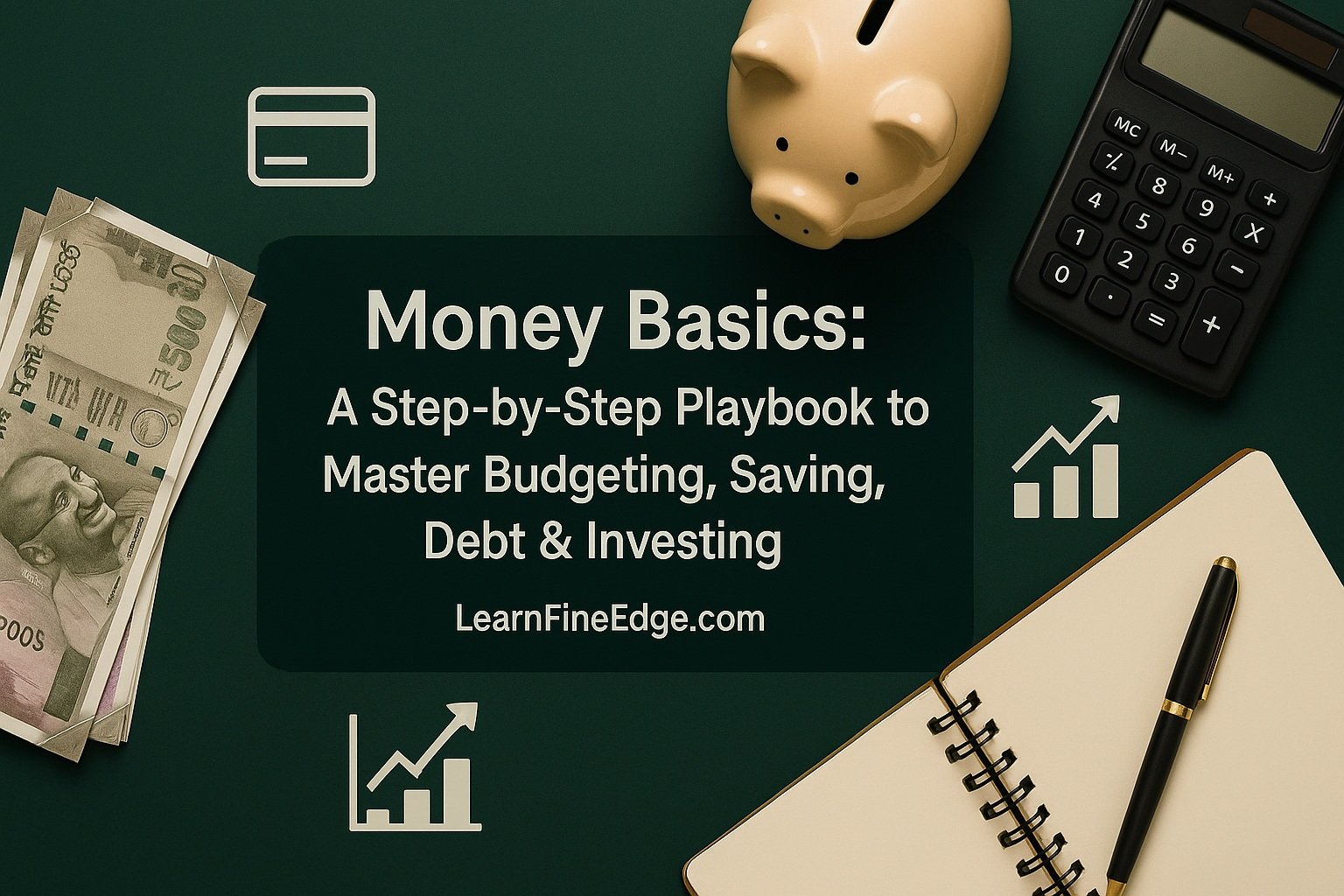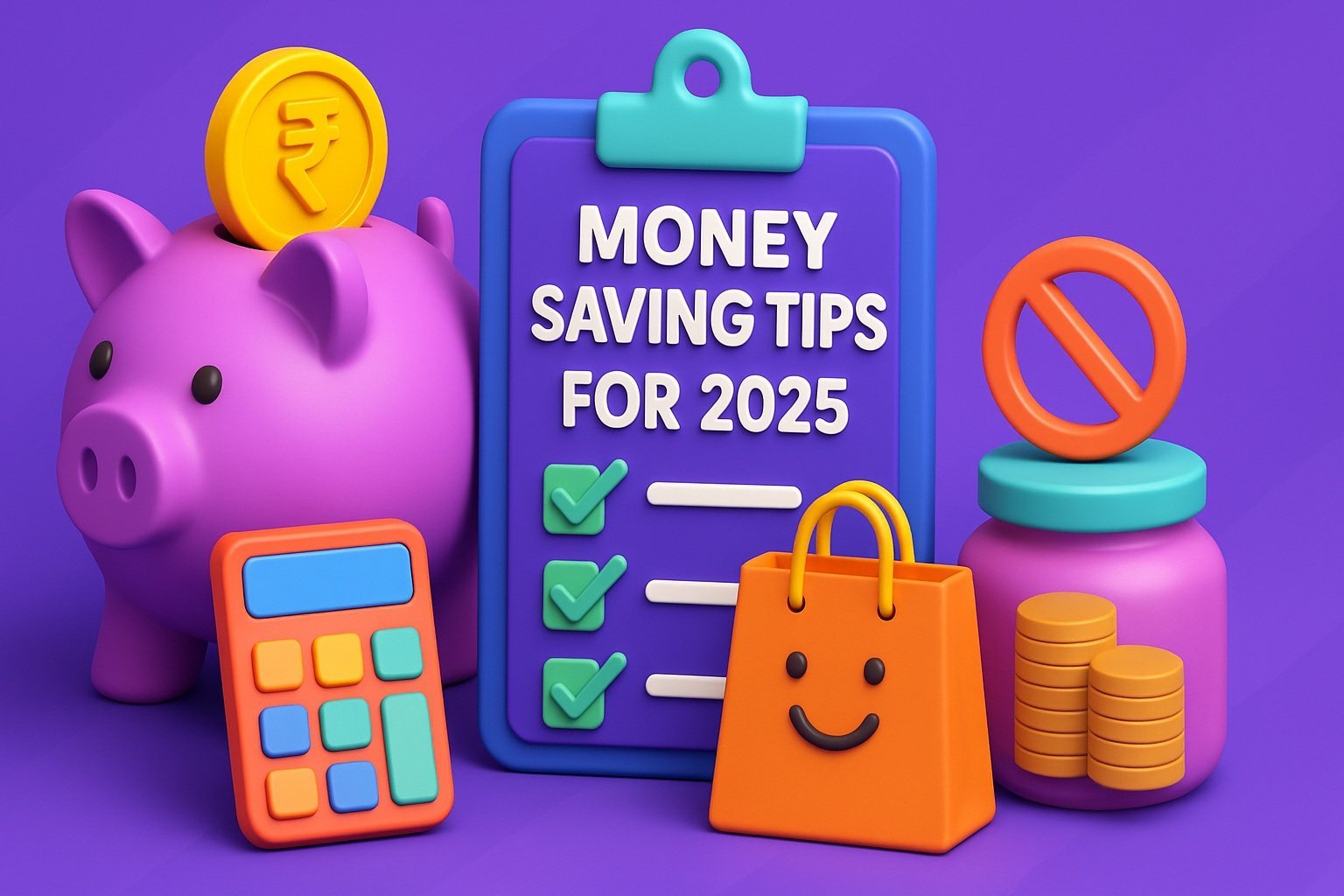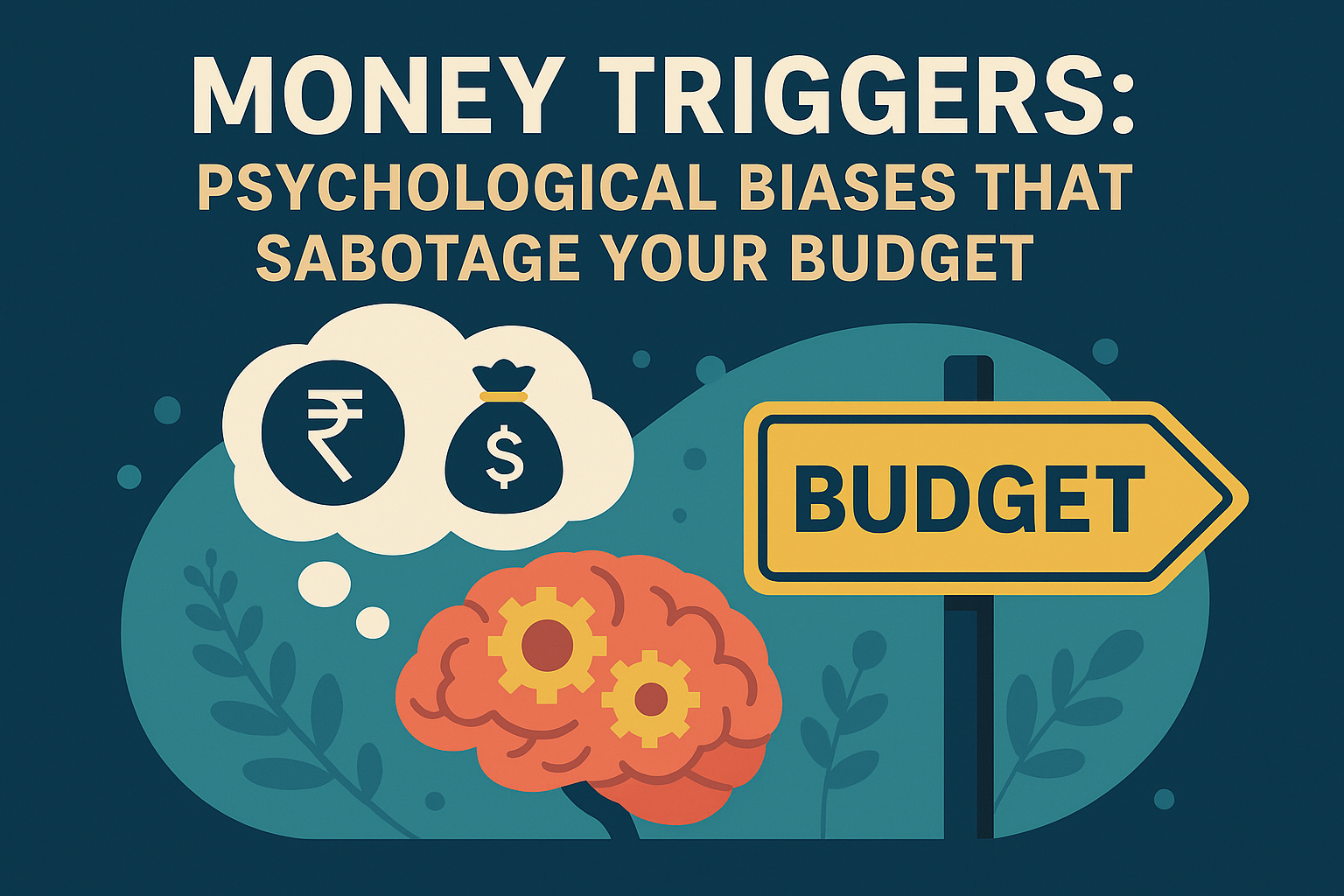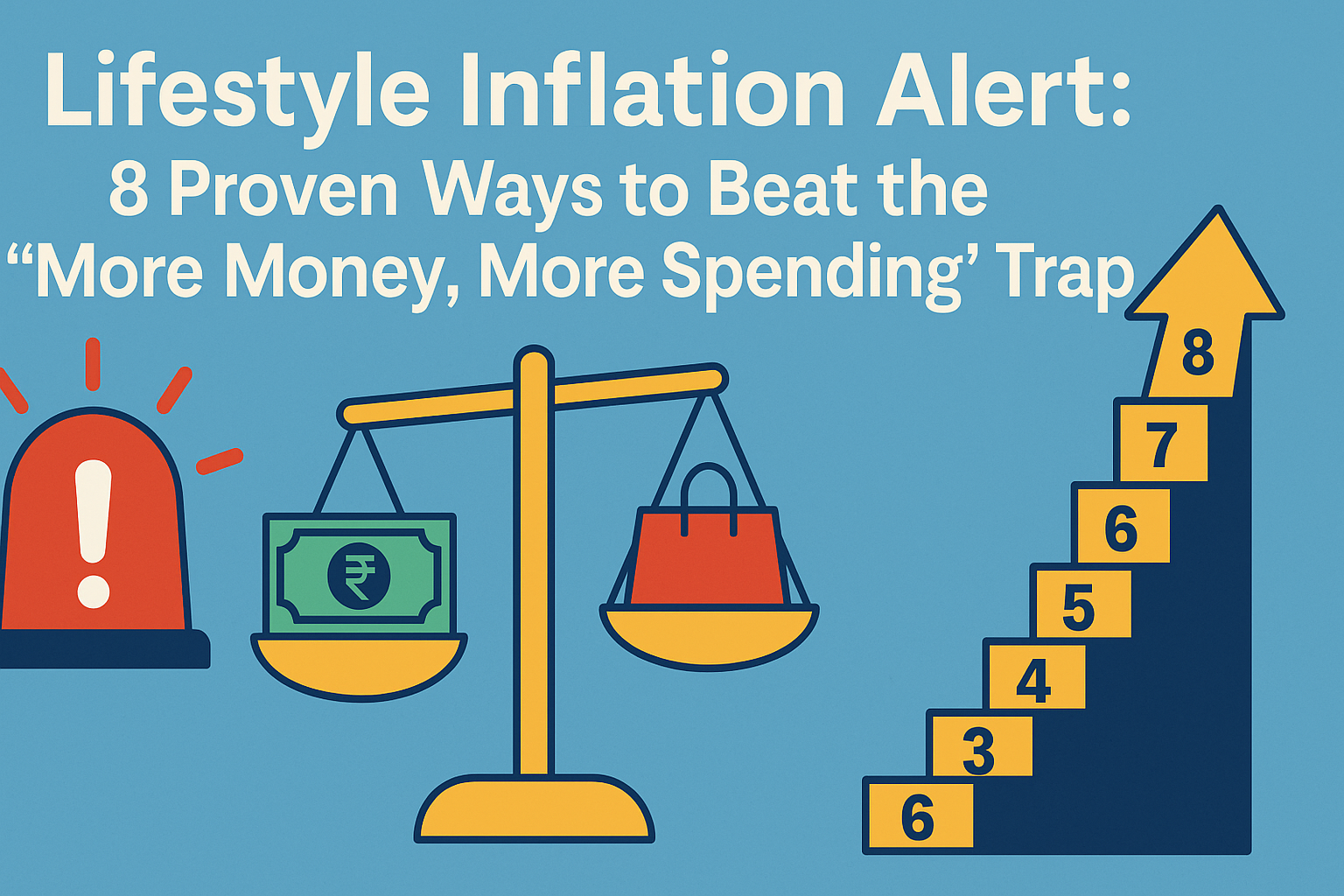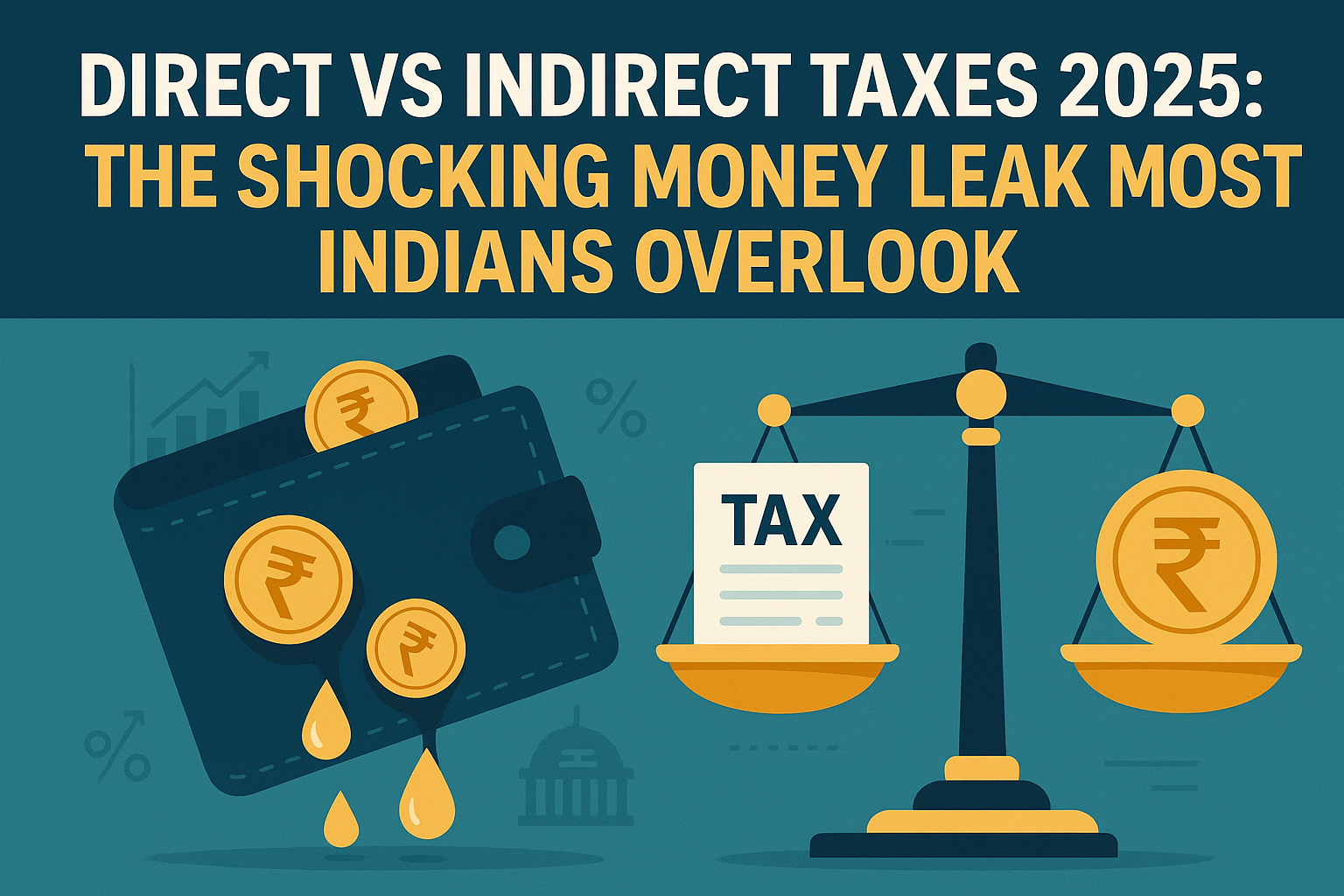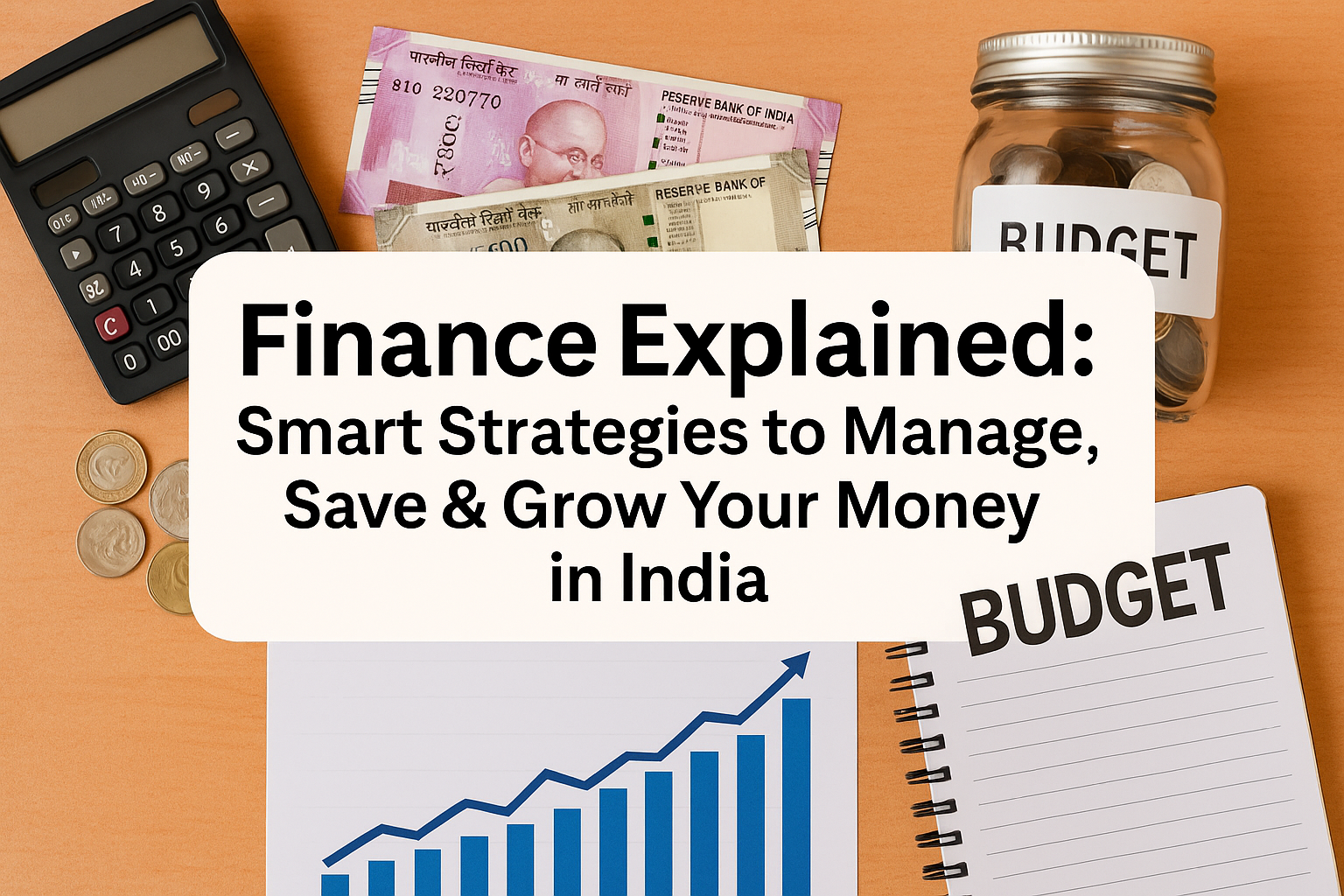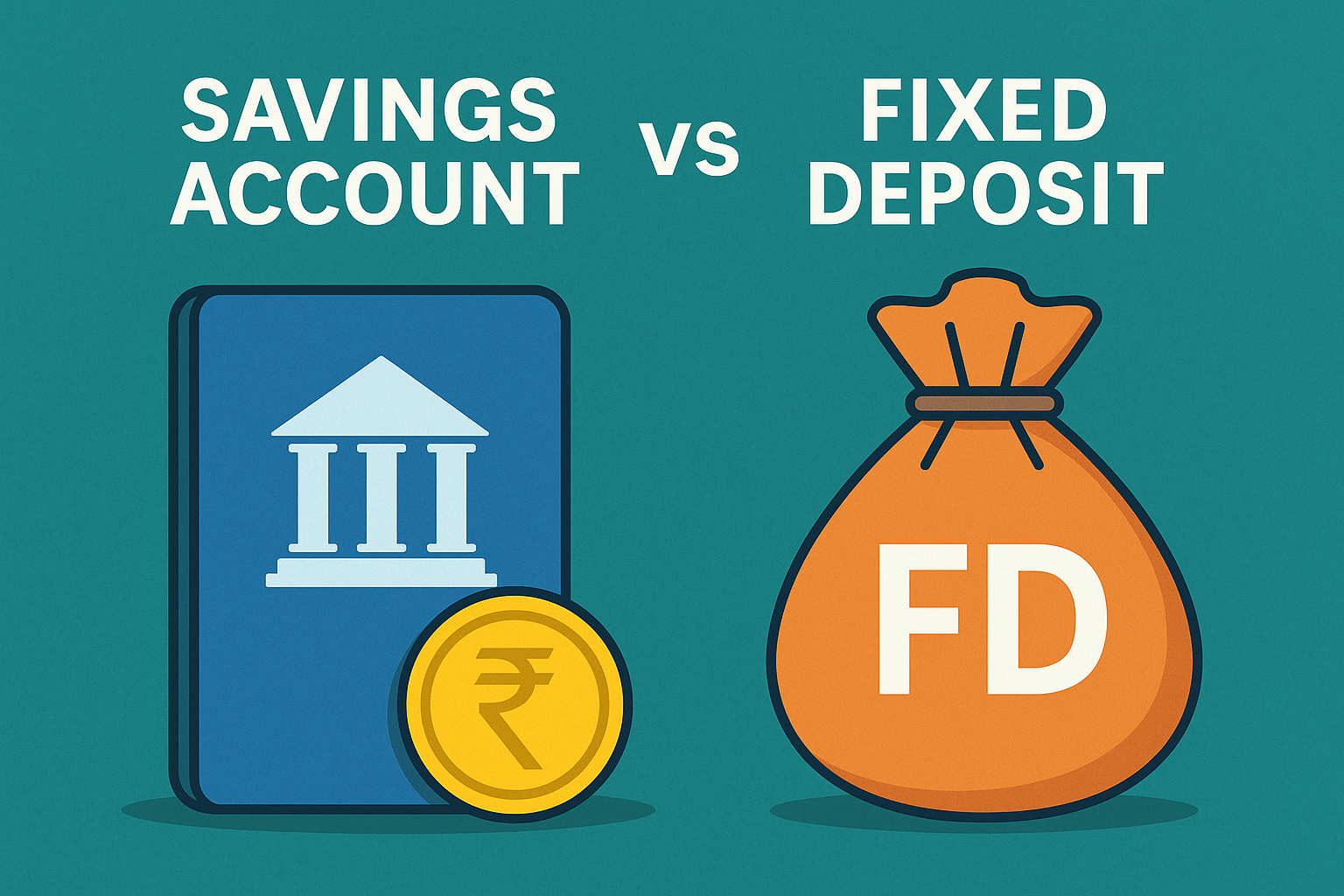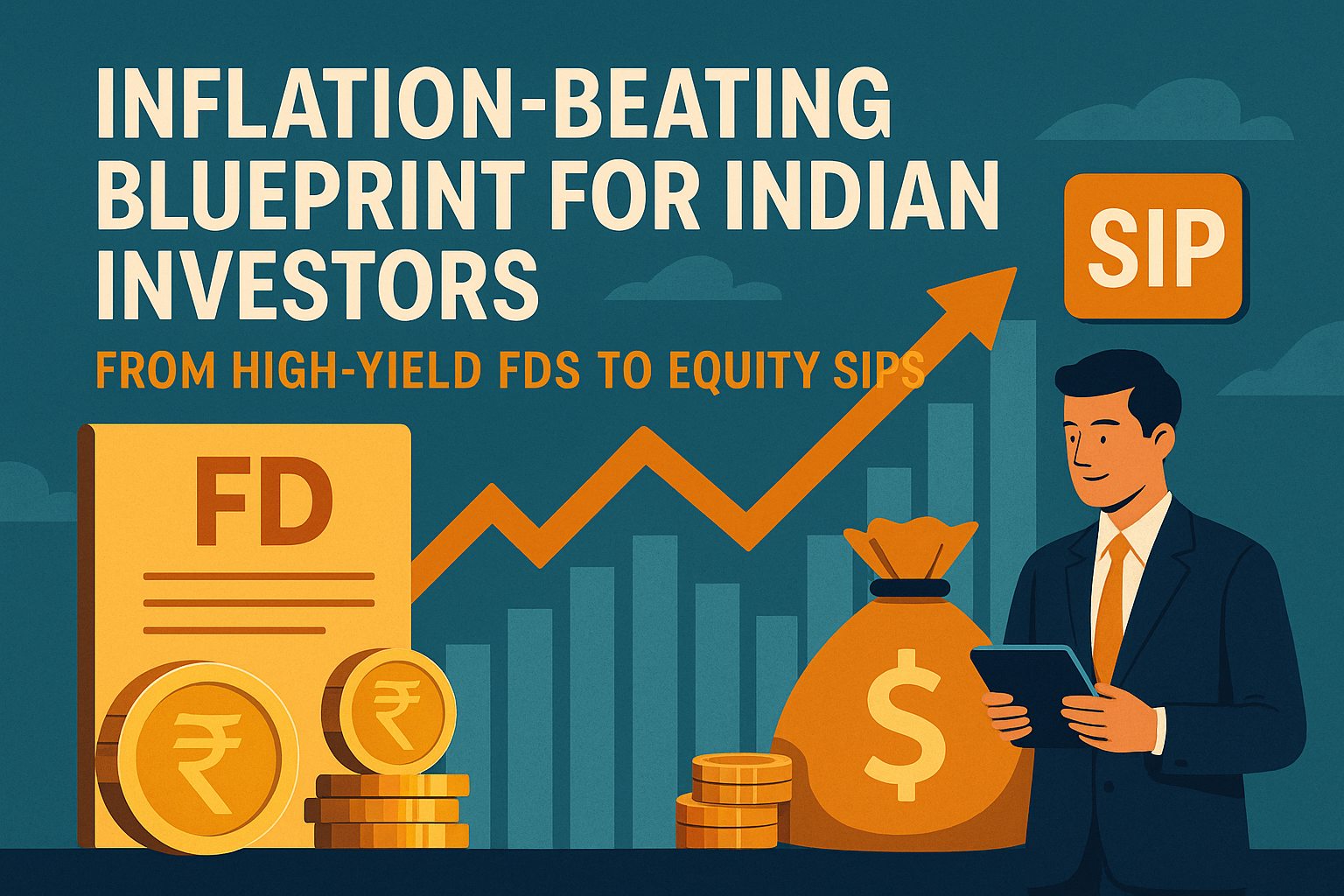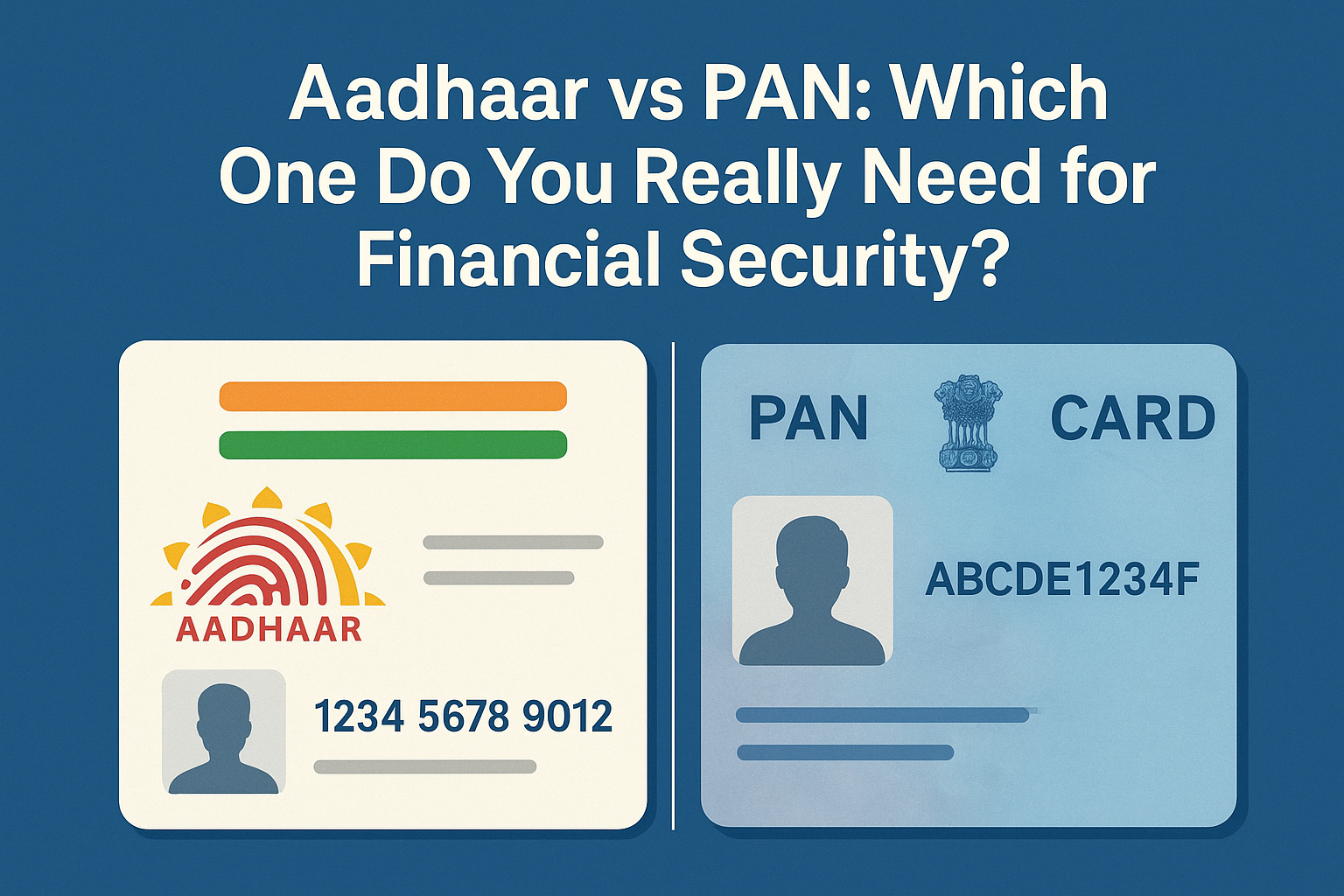
With FY 2025–26 rolling in major updates, the government has positioned the new tax regime as the default option for salaried individuals. It now comes with a higher standard deduction of ₹75,000 and provides zero tax liability on taxable income up to ₹12 lakh after applicable rebates. However, the old regime, rich in deductions, can still offer a better tax outcome in specific scenarios. This guide walks you through slab-wise comparisons, key exemptions, and strategic decision-making for optimal tax savings.
FY 2025-26 Tax Slabs at a Glance
Here’s a clear comparison of how the old vs new tax regimes differ across income slabs for FY 2025–26:
| Slab Band (₹) | Old Regime Rate | New Regime Rate |
|---|---|---|
| Up to ₹3,00,000 | 0% | 0% |
| ₹3,00,001 – ₹5,00,000 | 5% | 5% |
| ₹5,00,001 – ₹6,00,000 | 20% | 5% |
| ₹6,00,001 – ₹9,00,000 | 20% | 10% |
| ₹9,00,001 – ₹12,00,000 | 30% | 15% |
| ₹12,00,001 – ₹15,00,000 | 30% | 20% |
| ₹15,00,001 and above | 30% | 30% |
Note: These rates exclude the additional 4% Health & Education Cess. Surcharge applies on incomes above ₹2 crore.
New Regime Slabs under Section 115BAC
From FY 2025–26 onwards, the new regime becomes the default tax structure for all salaried individuals. This means unless you proactively opt for the old regime by filing Form 10-IEA before your return due date, you will be taxed under the new regime automatically.
Key Features:
-
Standard Deduction: Now increased to ₹75,000, up from ₹50,000 earlier.
-
87A Rebate Boost: If your taxable income is ≤ ₹12 lakh, your total tax liability becomes zero. When paired with the ₹75,000 standard deduction, this effectively means zero tax on gross income up to ₹12.75 lakh.
-
Deductions Allowed: Only a limited number of deductions remain active in the new regime:
-
Employer NPS contribution up to 14%
-
Family pension deduction of ₹15,000 or 1/3 of pension (whichever is less, up to ₹25,000)
-
Home loan interest for certain properties
-
Interest on electric vehicle loans
-
This makes the new regime simpler but potentially less beneficial for those who have substantial deductions in the old regime.
Old Regime Slabs (Regular Tax Structure)
The old tax regime continues with its traditional slab structure, which hasn’t changed for over a decade:
Base Slabs:
-
0% on income up to ₹2.5 lakh
-
5% on income between ₹2.5 lakh and ₹5 lakh
-
20% on income between ₹5 lakh and ₹10 lakh
-
30% on income above ₹10 lakh
Standard deduction in the old regime remains ₹50,000.
Key Benefits:
-
Full range of exemptions and deductions, including:
-
Section 80C: ₹1.5 lakh (PF, LIC, ELSS, school fees, etc.)
-
Section 80D: Health insurance premium deductions
-
HRA: House rent allowance benefits
-
LTA: Leave travel allowance
-
Home loan interest under Section 24(b)
-
NPS (Section 80CCD(1B)), up to ₹50,000
-
-
87A rebate under the old regime still exists, offering zero tax on taxable income ≤ ₹5 lakh, but this is far lower than the ₹12 lakh threshold in the new regime.
Key Differences Between Regimes
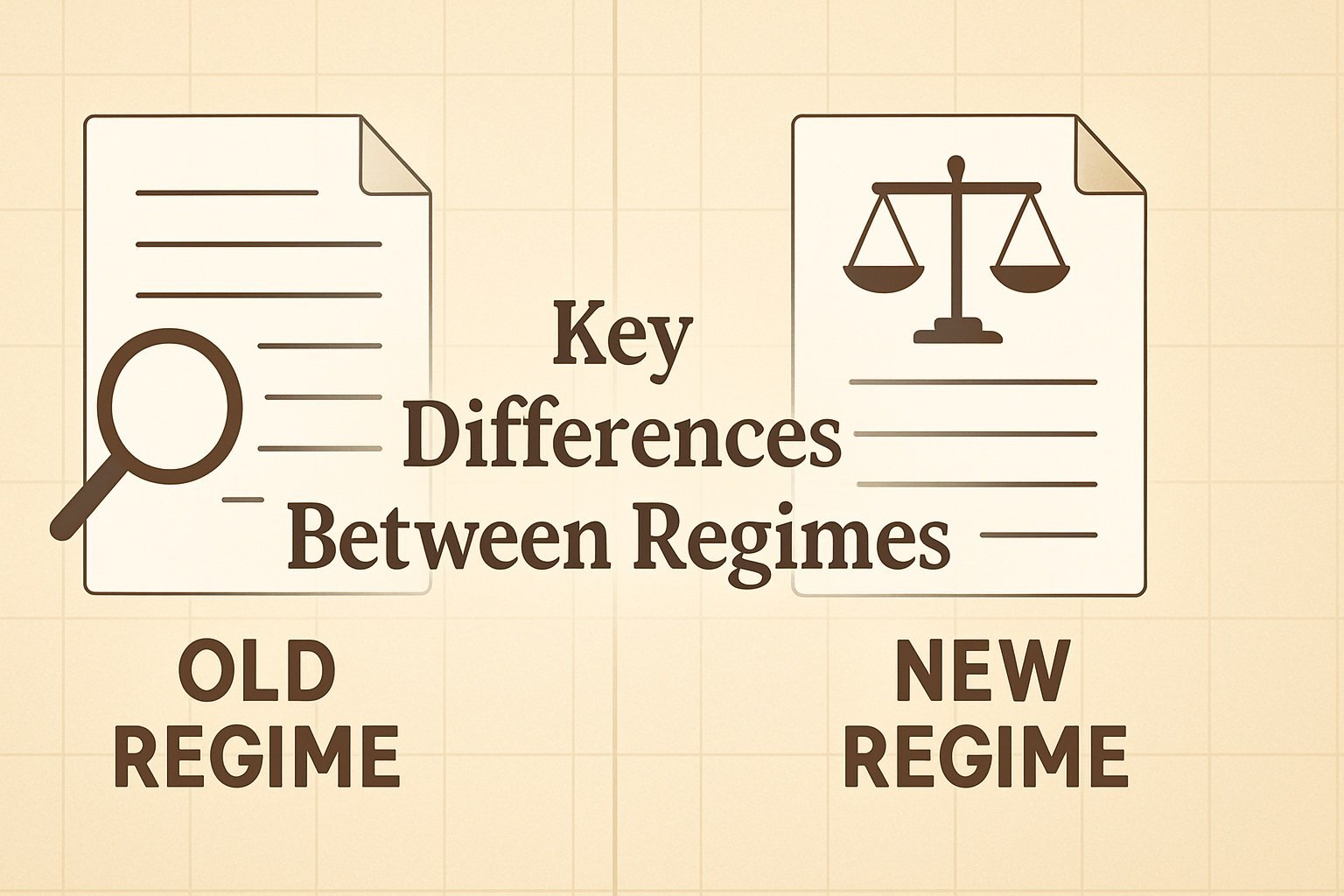
| Feature | Old Regime | New Regime |
|---|---|---|
| Default Status | Must opt in | Default for all taxpayers |
| Standard Deduction | ₹50,000 | ₹75,000 |
| 87A Rebate Threshold (Zero Tax Zone) | Taxable income up to ₹5 lakh | Taxable income up to ₹12 lakh |
| Deductions | Wide range under Sections 80C, 80D, etc. | Limited (Employer NPS, housing, EV loan) |
| Opt-in Form Required | No | Opt-out via Form 10-IEA |
| Complexity | High (requires documentation & planning) | Simple & hassle-free |
Strategic Considerations: Which Regime Works Better?
Choose the New Regime if:
-
Your total deductions (including 80C, 80D, HRA) are less than ₹2.5–₹3 lakh
-
You prefer a simple, paperwork-free tax experience
-
Your salary falls below ₹12.75 lakh (post-standard deduction) – you’ll owe zero tax
Choose the Old Regime if:
-
You claim multiple deductions that exceed ₹3 lakh
-
You have a home loan, HRA, or significant investments
-
You are comfortable with filing detailed claims and maintaining proofs
Summary Comparison Table
| Criteria | Old Regime | New Regime |
|---|---|---|
| Maximum deduction benefit | Can exceed ₹4 lakh with proper planning | Limited; mostly capped at standard deduction |
| Zero-tax income ceiling | ₹5 lakh | ₹12 lakh |
| Ease of filing | Moderate to complex | Very simple |
| Ideal for | High savers with deductions | Low savers or salaried under ₹12.75 lakh |
Opting Out of the New Regime
If you decide to go with the old regime, be sure to file Form 10-IEA before submitting your income tax return. Failing to do so will result in automatic taxation under the new regime even if the old one would save you more.
What You Gain and Lose With Each Regime (FY 2025-26)
Choosing between the old and new tax regimes for FY 2025–26 can make a big difference in your final tax liability. Each regime has its own benefits and limitations, with implications for savings, deductions, and compliance requirements. The new regime now includes a ₹75,000 standard deduction and a significantly larger zero-tax threshold, while the old regime retains the full buffet of exemptions and deductions. The following detailed comparison breaks down what you stand to gain or lose with each approach.
What You Gain and Lose with Each Regime
| Aspect | Old Regime | New Regime |
|---|---|---|
| Headline Benefit | Maximise savings via deductions & exemptions | Lower headline rates + bigger zero-tax band |
| Standard Deduction | ₹50,000 | ₹75,000 |
| Other Key Deductions | 80C (₹1.5 L), 24(b) (₹2 L), 80D (₹25k), HRA, LTA, etc. | Employer NPS (14 % of basic), family-pension (₹25k), and a few housing/E-vehicle sections |
| Who Profits Most | High mortgage, large 80C/80D investors, metro renters | Freshers, gig workers, those without big deductions |
| Compliance Load | Proof-submission, paperwork heavy | “No bills” payroll, simpler ITR |
| Switching Flexibility | Opt in or out every year (if no biz income) | Default; must file Form 10-IEA to leave |
The choice isn’t just about rates; it’s about lifestyle, financial behaviour, and documentation readiness. High-income earners with housing loans and Section 80 investments may find more value in the old regime. On the other hand, first-time jobholders or freelancers without tax-saving instruments may benefit from the simplicity and reduced rates of the new regime.
Deductions & Exemptions Allowed (Old Regime)
The old regime continues to support a wide spectrum of deductions and exemptions, allowing individuals to bring down their taxable income significantly, which is especially useful for salaried employees, investors, and homeowners.
Key Provisions:
-
Section 80C: Allows a deduction up to ₹1.5 lakh for investments such as:
-
Provident Fund (PF)
-
Equity-Linked Saving Schemes (ELSS)
-
Public Provident Fund (PPF)
-
Life insurance premiums
-
-
Section 24(b): Permits deduction of home-loan interest up to ₹2 lakh per year on self-occupied property.
-
Section 80D: Medical insurance premiums offer deductions up to:
-
₹25,000 for individuals below 60 years
-
₹50,000 for senior citizens
-
-
Other Deductions:
-
House Rent Allowance (HRA)
-
Leave Travel Allowance (LTA)
-
Standard Deduction of ₹50,000
-
Dozens of additional niche sections tailored for specific life expenses (e.g., donations, education loans, disability support)
-
Taxpayers under the old regime benefit from the flexibility to claim various life-event-based tax breaks, something the new regime sharply restricts.
Standard Deduction & Employer NPS (New Regime)
With Budget 2025, the new regime has been enhanced to offer higher base-level tax relief, which is particularly attractive for taxpayers who do not claim many traditional deductions.
Core Benefits:
-
₹75,000 Standard Deduction:
-
Automatically available to all salary and pension earners
-
No documentation or proof required
-
Flat reduction on taxable income before applying any slab rate
-
-
Employer NPS Contribution:
-
Deductible up to 14% of basic salary
-
Encourages long-term retirement planning
-
One of the few employer-linked deductions allowed under the new framework
-
-
Family Pension Deduction:
-
25% of family pension received
-
Capped at ₹25,000
-
Unlike the old regime that rewards tax-saving behaviour through investments and expenses, the new regime streamlines compliance and offers clarity with fewer moving parts. However, the limited scope of deductions means those with higher financial obligations (like home loans or education fees) may not benefit as much.
4 Salary Scenarios: Who Saves More?
Choosing the right tax regime can impact your annual take-home significantly. The following salary scenarios compare tax outcomes under both the old and new regimes using common deduction assumptions typical for salaried individuals. This head-to-head comparison helps illustrate where each regime shines and when one decisively saves more than the other.
| Gross Salary (₹) | Assumed Deductions (Old Regime) | Tax Under Old (₹) | Tax Under New (₹) | Winner |
|---|---|---|---|---|
| 700,000 | 80C ₹1.5L + 80D ₹25k + Std Ded ₹50k + HRA ₹25k = ₹2.5L | 0 (rebate) | 0 (rebate up to ₹12L) | Tie |
| 1,000,000 | Same ₹2.5L deduction | 52,500 | 0 | New |
| 1,500,000 | Same ₹2.5L deduction | 172,500 | 135,000 | New (saves ~₹37k) |
| 2,500,000 | Same ₹2.5L deduction | 472,500 | 427,500 | New (saves ~₹45k) |
Calculation Note: Cess excluded. The deduction mix reflects a realistic average salaried employee’s benefit. If total deductions exceed ₹3.5 lakh, especially at the ₹25 lakh slab, the old regime may regain cost advantage.
Step-by-Step Checklist: How to Choose Your Regime for FY 2025–26
Choosing the optimal regime isn’t just about current income; it’s about life stages, deductions, and simplicity. Follow this step-by-step guide to arrive at the best regime for your FY 2025–26 filing:
-
Project All Incomes
Include salary, freelance, rental income, fixed deposits, and savings interest. -
List Deductible Spends
Identify expenses like:-
Provident Fund (PF) contributions
-
Equity Linked Saving Schemes (ELSS)
-
Tuition fees
-
Insurance premiums
-
Home loan EMIs
-
House rent payments
-
-
Run a Calculator
Use platforms like ClearTax or Moneycontrol to plug in both regimes and compare outcomes. -
Apply the 87A Shield
In the new regime, if taxable income ≤ ₹12 lakh (post-₹75k standard deduction), the 87A rebate brings tax liability to zero. -
Factor Payroll Simplicity
Prefer the new regime if you dislike collecting proofs and submitting bills. -
Account for Life Events
Events like marriage, buying a home, or having children can tilt the scale in favour of the old regime due to rising deductions. -
Submit Regime Choice to HR by April
Most employers lock TDS deductions for the year in Q1, so submit your regime preference early. -
Re-evaluate Before Filing
If your deductions or salary changed mid-year, and TDS under the wrong regime was deducted, you can still switch at the time of ITR filing by submitting Form 10-IEA.
Advanced Tax-Saving Tactics Within Each Regime
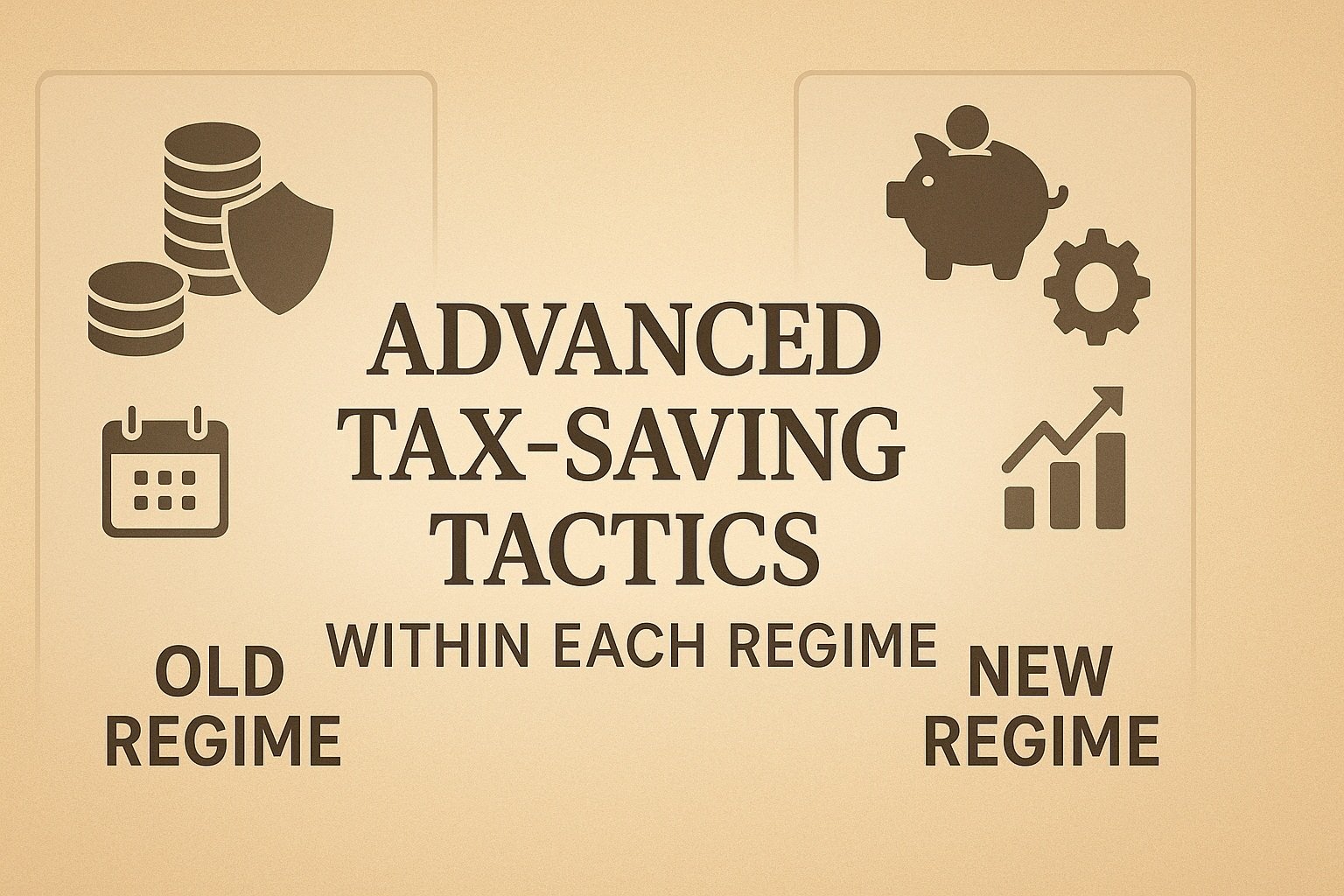
Depending on your choice, the following tactics help you extract more tax savings from either regime:
Optimise Salary Structure (New Regime)
-
Push Employer NPS to 14%
Allows a 30% marginal tax saving without documentation. Best for high-income earners. -
Convert Allowances to Reimbursements
Fuel, telecom, or internet reimbursements are still tax-free even in the new regime. -
Use Voluntary Provident Fund (VPF)
While not deductible under new rules, VPF’s 8%+ tax-free returns beat FDs and compound long-term wealth without an additional tax burden.
Max Out 80C / 80D / 24(b) (Old Regime)
-
Hit the ₹1.5 Lakh Ceiling
Combine ELSS, PPF, and employee PF to maximise the 80C bucket every year. -
Prepay Home Loan Interest
Strategically prepay your home loan interest to fully utilise the ₹2 lakh cap under Section 24(b). -
Buy Health Insurance Early
Opt for a family floater plan when younger to lock in lower premiums and claim consistent 80D benefits annually.
Hybrid Strategy for Couples
-
Spouse 1 in New Regime
Choose a new regime for payroll simplicity and more cash in hand if deduction potential is low. -
Spouse 2 in Old Regime
Use a full deduction suite:-
Take a joint home loan to unlock the double Section 24(b) interest benefit.
-
Route investments (ELSS, mutual funds) through the higher-income spouse’s PAN for capital-gains indexation and better tax arbitrage later.
-
Step-by-Step Checklist: How to Choose Your Regime for FY 2025–26
Selecting the right tax regime for financial year 2025–26 can have a significant impact on your annual savings. The government allows individual taxpayers to choose between the old and new tax regimes, based on their income structure and deduction eligibility. The following checklist ensures you approach the decision with clarity and precision.
Step-by-Step Checklist for Tax Regime Selection
-
Project All Incomes
Include every stream of salary, freelance payments, house rent, savings account interest, fixed deposits, and capital gains. -
List Deductible Spends
Map out all your eligible deductions, such as:-
Provident Fund (PF) contributions
-
Equity-Linked Saving Schemes (ELSS)
-
Tuition fees for children
-
Health or term insurance premiums
-
Home loan interest payments
-
House rent if you’re eligible for HRA
-
-
Run a Calculator Comparison
Use tax calculators from trusted platforms like:Input your income, deductions, and exemptions into both regime models to compare outcomes.
-
Apply the 87A Shield
If your taxable income is within the rebate limit, the 87A provision may eliminate your tax entirely:-
Old regime: Zero tax if income ≤ ₹5 lakh
-
New regime: Zero tax if income ≤ ₹12 lakh (after ₹75,000 standard deduction)
-
-
Factor Payroll Simplicity
Prefer the new regime if you:-
Dislike submitting proofs for deductions
-
Have limited tax-saving investments
-
Want maximum salary in-hand with minimal compliance
-
-
Account for Future Life Events
Upcoming changes in your life, like getting married, buying a house, or having children, can open up several tax-saving opportunities. These future events might make the old regime more lucrative down the line. -
Submit Regime Choice to HR by April
Most employers freeze TDS (Tax Deducted at Source) configurations for the entire year by Q1. Submit your tax regime selection to your company’s HR team before the April deadline. -
Re-evaluate Before Filing ITR
If your TDS deductions were calculated under one regime but actual savings lean the other way, don’t worry. You can switch tax regimes at the time of filing your return by using Form 10-IEA on incometax.gov.in.
Advanced Tax-Saving Tactics Within Each Regime
Taxpayers can further optimise their position within their chosen regime using specific strategies to reduce tax outgo or grow post-tax income.
Optimise Salary Structure (New Regime)
Under the new regime, deductions are limited, but smart salary planning can still unlock savings:
| Tactic | Benefit |
|---|---|
| Employer NPS Contribution (14%) | Saves up to 30% marginal tax; no documentation required |
| Allowances to Reimbursements | Convert mobile, fuel, or internet bills into tax-free components |
| Voluntary Provident Fund (VPF) | While not deductible, earns 8%+ tax-free interest, compounding wealth |
VPF allows disciplined long-term saving without falling under the taxable bracket, making it a smart move even under the new regime.
Max Out 80C / 80D / 24(b) (Old Regime)
Taxpayers under the old regime can unlock significant savings by fully utilising available deductions:
| Section | Strategy |
|---|---|
| 80°C | Combine ELSS, PPF, and EPF to hit the ₹1.5 lakh ceiling annually |
| 24(b) | Prepay home loan interest to claim full ₹2 lakh deduction |
| 80D | Purchase a family floater health insurance early to save on premiums |
By planning in advance, you can claim higher deductions and reduce your tax liability substantially.
Hybrid Strategy for Couples
In dual-income households, combining both regimes can maximise take-home pay and deductions simultaneously.
| Spouse 1 | Spouse 2 |
|---|---|
| Choose new regime | Choose old regime |
| Enjoy simplified payroll, with more in hand. | Leverage high-value deductions (e.g., home loan, insurance, ELSS) |
| High liquidity, low compliance | Lower overall household tax burden due to higher exemptions and joint asset ownership |
-
Home loans in joint names allow both partners to claim ₹2 lakh each under Section 24(b)
-
Joint investments such as ELSS or mutual funds can be tagged to the higher-income spouse’s PAN to take advantage of capital gains indexation benefits.
Compliance & Switching Rules You Must Know
Starting 1 April 2025, the new tax regime becomes the default system for all individual taxpayers in India. While it simplifies tax filing by removing most deductions, those who benefit from exemptions can still opt for the old regime but only by filing Form 10-IEA before the ITR due date.
Key Compliance Rules for FY 2025–26
| Compliance Area | Details |
|---|---|
| Default Setting | The new regime will be auto-applied from 1 April 2025 |
| Opting Out (Salaried) | Must file Form 10-IEA each year to choose the old regime |
| Opting Out (Business) | Allowed to switch only once after FY 2025–26 |
| Payroll Lock | Once HR locks the regime for TDS, no changes mid-year; ITR filing allows a switch. |
| Surcharge & Cess | 25% surcharge (for high income) and a 4% health and education cess apply equally |
| Proof Retention | Even under the new regime, keep Form 16 and salary slips for 7 years |
If you choose the wrong regime or miss deadlines, it can result in unnecessary tax payments or processing under the default structure. Understanding timelines and documentation is critical.
Frequently Asked Questions (People Also Ask)
Q1. Is the new tax regime compulsory from FY 2025-26?
Yes, it becomes the default option for all individual taxpayers. However, you can still choose the old regime by submitting Form 10-IEA before the due date for filing your income tax return.
Q2. What happens if I forget Form 10-IEA?
If you fail to submit Form 10-IEA, your return will be processed under the new tax regime automatically. This decision becomes irreversible after the ITR is filed, so timely submission is crucial.
Q3. Are senior citizens better off in the old regime?
Often, yes. Senior citizens can typically utilise higher deductions under:
-
Section 80D (health insurance)
-
Section 80TTB (interest income)
-
Section 80C (investments)
Given their lower taxable income, these deductions can outweigh the simplified rates in the new regime.
Q4. How does rebate 87A work now?
Under the new regime:
-
If your taxable income (after a ₹75,000 standard deduction) is ≤ ₹12 lakh, you qualify for an 87A rebate equal to your full tax payable, reducing your tax liability to zero.
Under the old regime:
-
The 87A rebate still applies for incomes up to ₹5 lakh only.
Q5. Can I switch regimes every year?
Yes, if you’re a salaried individual with no business income, you’re allowed to switch between the new and old regimes every financial year. However, for business or professional income, you can move back to the new regime only once after opting for the old.
Q6. Does HRA exemption exist in the new regime?
No. House Rent Allowance (HRA), Leave Travel Allowance (LTA), and most other exemptions are not available under the new tax regime. All such allowances are fully taxable.
Q7. Which regime suits a ₹15 lakh salary with no home loan?
In most scenarios, the new regime delivers a better outcome. For a ₹15 lakh gross income without major deductions, taxpayers can save around ₹37,000 more in tax compared to the old regime.
Q8. What if I cross ₹12 lakh mid-year?
If your projected taxable income increases beyond ₹12 lakh during the financial year, your employer will automatically adjust your TDS. However, you will lose the 87A rebate only if your final year-end taxable income crosses the ₹12 lakh threshold.
Q9. Do both regimes require advance tax instalments?
Yes. Regardless of the chosen tax regime, if your total tax liability (after TDS) exceeds ₹10,000, you’re required to pay advance tax in quarterly instalments as per income tax law.
Q10. Will the standard deduction rise again?
Possibly. While the standard deduction has been increased to ₹75,000 under the new regime in FY 2025–26, there is no official announcement on further hikes. Future increases may depend on the February 2026 Union Budget.
This fully aligned compliance breakdown ensures every taxpayer understands the must-follow rules, filing requirements, and consequences of timing errors when choosing between the old and new tax regimes for FY 2025–26.
Let me know if you’d like visual infographics summarising each rule for use on your blog or content platform.


